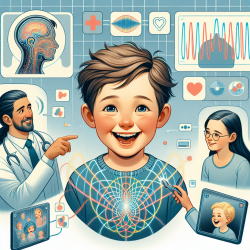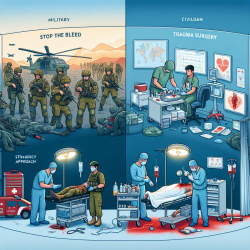Introduction
In the realm of speech-language pathology, the integration of innovative technologies can significantly enhance diagnostic and therapeutic outcomes. The research article "Two-dimensional Talbot self-imaging via Electromagnetically induced lattice" presents a pioneering approach to imaging that could revolutionize our understanding and application of imaging techniques in therapeutic settings. This blog explores how these findings can be leveraged by practitioners to improve their skills and outcomes in speech-language pathology.
Understanding the Research
The study introduces a lensless optical method for imaging two-dimensional ultra-cold atoms, utilizing the Talbot effect and Electromagnetically Induced Lattice (EIL). This method allows for non-destructive imaging with adjustable transverse resolution, offering a novel approach that can be applied in various fields, including optical testing and sub-wavelength lithography.
Implications for Speech-Language Pathology
While the study's primary focus is on atomic imaging, the principles can be translated into speech-language pathology, particularly in improving imaging techniques used in diagnostics. Here’s how:
- Enhanced Imaging Techniques: By understanding the Talbot effect and EIL, practitioners can explore new imaging methods that offer higher resolution and contrast, crucial for diagnosing speech and language disorders.
- Non-Destructive Methods: The non-destructive nature of this imaging technique ensures that the integrity of the subject is maintained, a critical factor when working with children.
- Adjustable Resolution: The ability to modulate image resolution can aid in tailoring diagnostic approaches to individual needs, enhancing personalized therapy plans.
Encouraging Further Research
For practitioners eager to advance their skills, delving deeper into the principles of the Talbot effect and EIL could open new avenues for research and application in speech-language pathology. Here are some steps to consider:
- Collaborate with Researchers: Engaging with physicists and engineers who specialize in optical imaging can provide valuable insights and foster interdisciplinary collaborations.
- Participate in Workshops: Attending workshops or seminars on advanced imaging techniques can broaden your understanding and application of these methods in clinical practice.
- Conduct Pilot Studies: Implementing small-scale studies to test the efficacy of these imaging techniques in speech-language pathology can provide preliminary data and guide future research.
Conclusion
Incorporating advanced imaging techniques, as outlined in the research on Talbot self-imaging and EIL, can significantly enhance the diagnostic and therapeutic capabilities of speech-language pathologists. By embracing these innovations, practitioners can improve outcomes for children and contribute to the evolving landscape of speech-language pathology.
To read the original research paper, please follow this link: Two-dimensional Talbot self-imaging via Electromagnetically induced lattice.










